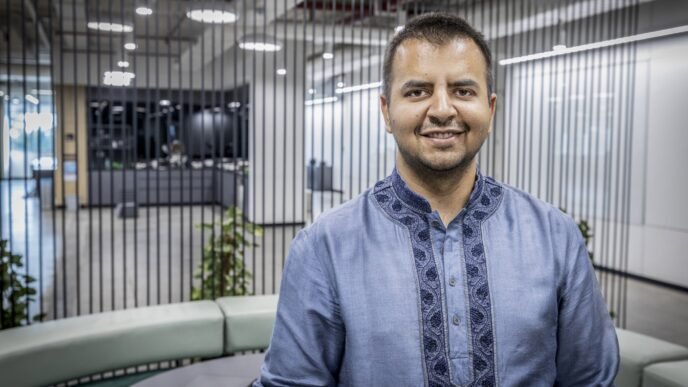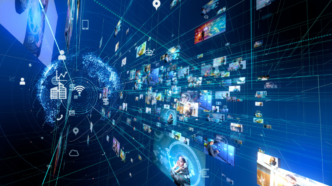OpenAI’s Ongoing AI Evolution
OpenAI, one of the most influential AI research organizations, has been at the forefront of artificial intelligence development. However, recent developments in the global AI landscape, particularly the rise of DeepSeek, have forced OpenAI to reassess its strategies.
During a Reddit AMA session, OpenAI’s CEO Sam Altman, alongside other executives, answered pressing questions about AI innovation, competition, and their stance on open-source AI.
Open Source: A Shift in Perspective
Historically, OpenAI started as a non-profit dedicated to open-source AI research, but as the company evolved, it embraced a more proprietary model. This shift was driven by concerns over safety, competition, and potential misuse of AI models. However, Altman admitted that OpenAI may have been on the “wrong side of history” when it comes to open sourcing its AI models.
Key Points from the AMA Session:
- OpenAI’s initial approach was to keep its latest models closed-source.
- DeepSeek’s AI advancements have challenged OpenAI’s dominance.
- Altman acknowledged the need for a “different open-source strategy.”
- Chief Product Officer Kevin Weil suggested OpenAI might open-source older models.
A New Open-Source Direction?
While Altman recognized the need for a shift, he emphasized that open-source initiatives were not OpenAI’s highest priority at the moment. Weil further added that while OpenAI would consider open-sourcing outdated models, there were no immediate plans to do so for their latest technology.
DeepSeek: A Growing Threat to OpenAI
One of the biggest challenges OpenAI currently faces is competition from Chinese AI firms, particularly DeepSeek. OpenAI has accused DeepSeek of intellectual property (IP) theft, alleging that its models were trained using OpenAI’s proprietary technology through a process called distillation. This claim, if true, would directly violate OpenAI’s usage policies and raise ethical concerns.
Competitive Landscape: OpenAI vs. DeepSeek
| Aspect | OpenAI | DeepSeek |
|---|---|---|
| Approach | Closed-source AI | Open-source AI |
| AI Models | GPT-4, DALL-E 3 | R1, DeepSeek Chat |
| Training | High-cost compute | Claims efficiency |
| Pricing | Premium & Subscription-based | Lower-cost access |
| AI Reasoning | Partially revealed | Full transparency |
DeepSeek’s models are priced significantly lower than OpenAI’s, making them attractive to businesses and researchers looking for cost-effective AI solutions. Their transparent reasoning models, unlike OpenAI’s concealed reasoning process, have also drawn significant interest.
OpenAI’s AI Reasoning and Transparency Strategy
OpenAI has traditionally restricted the visibility of its models’ reasoning processes to prevent competitive scraping of training data. However, in response to DeepSeek’s approach, Altman and Weil hinted at a potential shift.
Changes on the Horizon:
- OpenAI may soon reveal more about how its reasoning models function.
- Transparency would cater to power users who want insight into AI decision-making.
- However, OpenAI must balance transparency with competitive risks.
Weil noted that showing all AI reasoning processes might lead to distillation, where competitors could extract valuable insights from OpenAI’s model outputs. Finding the right balance remains a challenge.
The Cost of AI: Compute Power and Infrastructure
AI development is resource-intensive, requiring massive computational power. OpenAI is investing heavily in infrastructure to support its growing user base and AI model demands. Their Stargate project, a next-generation AI data center initiative, underscores this commitment.
AI Compute and Cost Trends:
- ChatGPT Pro costs OpenAI more than $200 per user monthly.
- AI advancements require exponential increases in compute power.
- OpenAI plans one of the largest financing rounds in history to sustain its growth.
AI Pricing and Subscription Models
One major concern among OpenAI users has been potential price increases for ChatGPT services. Altman reassured users that OpenAI aims to make ChatGPT more affordable over time, though high operational costs pose challenges.
AI Pricing Models:
- Current Model: ChatGPT Free, ChatGPT Plus, and Pro Plans.
- Future Plans: Cost reduction efforts, but feasibility remains uncertain.
The Debate Over AI’s Role in National Security
Another controversial discussion involved OpenAI’s partnership with the U.S. government for nuclear defense research. OpenAI has provided AI access to U.S. National Laboratories, raising ethical concerns about the use of AI in military applications.
Ethical Considerations:
- Some fear AI could be used for destructive weapon development.
- OpenAI executives trust government scientists to use AI responsibly.
- AI safety remains a critical area of concern for researchers and policymakers.
The Future of OpenAI: Upcoming AI Releases
Many Reddit users inquired about OpenAI’s next-generation AI models, including reasoning models, the GPT-5 release timeline, and updates to their image generation technology (DALL-E 4).
Expected AI Developments:
- Next reasoning model (o3): Expected within a few months.
- GPT-5: No fixed release date yet.
- DALL-E 4: Under development, promises significant improvements.
A Pivotal Moment for OpenAI
OpenAI finds itself at a critical crossroads—balancing innovation, transparency, and competition. DeepSeek’s advancements have prompted OpenAI to reconsider its approach to open-source AI, model transparency, and pricing strategies.
While OpenAI remains a leader in artificial intelligence, it faces mounting pressure from both rival AI labs and government regulators. Whether OpenAI can adapt and maintain its dominance in the AI space remains to be seen.













